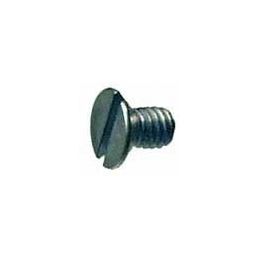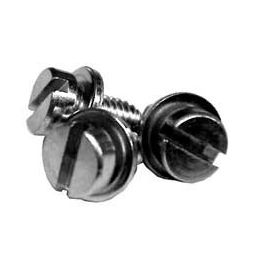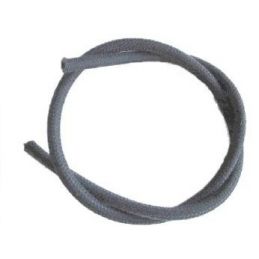Stock Crankcase Breather vs. Aftermarket Breathers
- Written by Steve Phillips for HotVWs Magazine -
In this article I want to talk about breathers on your engine.
Let's look at the stock crankcase breather. It is located on the generator stand on all upright motors and on the pulley side of the motor on pancake motors. On upright motors it is on the gen/alt stand where you pour in the oil. Most of the time it has a dump tube which goes through the tin and out on the ground. All of them have a “nipple” that you put a hose on that goes into the air cleaner. There are a few things to look at here. First, the generator stand has a baffle plate. This keeps oil that is slinged up by the cam gears from going up the oil filler. This baffle has to be put in correctly for it to work right.


Pressure that enters the crankcase blows through this baffle and up the oil filler. It then hits the oil cap and through another baffle. At this point most of the oil should have been caught by the baffling. Then the air cleaner which has a slight vacuum on the hose which goes down to the oil filler sucks that air through the filter and down the carb. Any excess pressure goes down the dump tube and out a boot that is located on the end of the tube. So that’s how it works stock. It’s a pretty good system.
Let's take a look at the boot on the bottom of the dump tube. This is an important boot. It will appear to have a closed end. Well it doesn’t or shouldn’t. It is more of a valve than a boot. It has an opening in the bottom that will only open when there is pressure. Why is that? Well when you are cranking the motor to start it you will have suction there. That means when you're cranking your motor it is sucking up anything that is below it. Where is the boot? On the bottom of the engine. Where is dirt? On the bottom. So it can suck up dirt. Dirt in the crankcase is bad. I'm sure most of you out there do not have this boot. It's cheap so go get one. Its easy to put on. Inside the boot is a nipple that fits into a hole that is in the tube. The other thing I always see missing is the grommet that the tube goes through tin. This is harder to put in without taking the oil filter off.
.jpg)

On type 3 motors you still have that boot, so make sure it's there. Type 4 motors do not, so don’t worry about it.
Now let's look at some of the after market stuff. First is the oil fillers. Most of the common ones just have a hose nipple out the side. No baffling. Do they work? Yeah they work. Not my first choice but they do work and they do look cool. So what do we do with that hose fitting out the side? Well we can tie it into the air cleaner. That’s where it's supposed to go. What about the dump tube? Yeah you won’t have one. It is the end of the world? No it does work, but now any excess oil is going to be going into the air cleaner. Speaking of air cleaners. Let's look at aftermarket air cleaners where this hose from the oil filter goes. On a stock air cleaner the oily air is before the filtering. On after market air cleaners the hose comes in after the air cleaner. So it is not filtered. Yep sucking unfiltered oily air down the carb. End of the world? No it's not. It does work but again not my first choice on doing this.
Now there are some nice aftermarket oil filters with baffles in them and they range from looks to function. One fix here if you don’t want that oily air going down your carb, you put on a small filter on the end of the hose. The only drawback there is without the dump tube it will get oily but in my opinion it's better than sucking that oily air down the carb.

What about breather boxes? Should I go through all the work to install one? Do they work? Here is my take on breather boxes. If you have a lot of crankcase pressure then yes you need one. Well how do I know I have a lot of crankcase pressure? What causes a lot of pressure? Where does crankcase pressure come from? Crankcase pressure comes from the black forest. Not really, it comes from combustion getting by the rings mainly. Is it supposed to? Well yes your going to get a little passed the rings period. Even stock engines do. That is because rings have end gaps. This pressure goes through these gaps. The higher your compression ratio the more pressure will gets through these gaps. As a general rule here, if I run 8 1/2 to 1 or less compression then I do not run a breather box. I don’t care what size the engine is. If I run over 8 ½ to 1 then I put a breather box on.
Now let's look at the boxes. Most of the common ones have three to four hoses. One for the oil filler and one each for the valve covers. The fourth, if you have one, is for a fuel pump block off plate. This all works, kinda of. You need to mount the box up high. Look at the box, take it apart. You will see the lid does not seal. That is to let out the pressure. That’s good. Most of them do not have a foam filter in them. That’s not good. Why? Because unfiltered air can suck into the motor when starting. All of them do not have a drain. Again not good, but hey when the level gets to the hose it will drain. On off road cars they do make a breather system that is pretty good.
It has two hose nipples out the side and one out the bottom. What I do is mount it to one side of the engine up high. I run the bottom hose to the closest valve cover. Then one hose out the side to the gen/alt stand and the other side hose to the other valve cover. This way when I shut the motor off any oil that made it up the hose will drain back down. The breather has a filter and a hood over that filter. Pretty good system. The only thing I do is use a rubber washer and a nylock nut to hold the hood on. This way I have a good seal and the wing nut doesn’t fall off.
So now you understand how this all works, here is what I end up doing. On a street motors, upright (car with an engine compartment) with 8 ½ or less compression ratio, I will use a stock oil filter or maybe an aftermarket chrome one that has the steel dump tube. I use a grommet through the tin. I install the dump tube boot, then use a small breather and route it behind the motor through the rear bell housing tin. On pancake motors, I use the stock oil breather and if I have aftermarket air cleaners I again run a small breather filter. On off road cars (motor out in the open) I use a stock style oil filter that does not have a dump tube and then route a hose up with a small breather on it as well. I’ll zip tie these hoses up above the engine.
On street cars that have over 8 ½ to 1, I will use a breather box of some kind. I usually find a piece of foam that is oil resistant. I will modify the box in some way to get a drain on the bottom. That way every once in a while I will drain the oil out of it before it reaches the hose level.
What not to do. If you have an aftermarket oil filler with the hose nipple; do not just run a hose through the tin and onto the ground. Do not just plug the hose nipple. Pressure has to go somewhere.
In this article I have talked about the most common breather boxes. There are also some pretty fancy breather systems out there that work good and have the baffling in them. Not a bad way to go, just check your wallet to see if it works for you. I hope I made you think and now have your own opinion on what to do.







